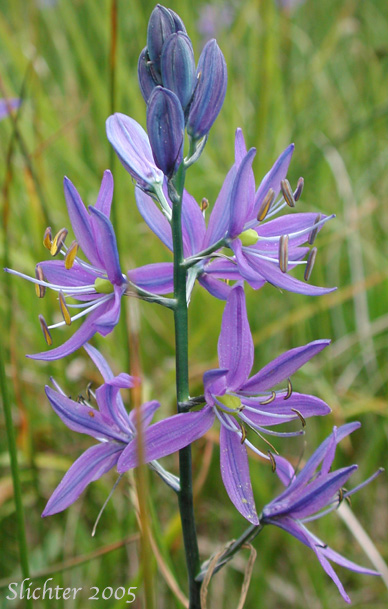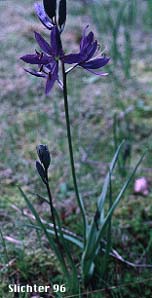
 Characteristics:
Characteristics:
Common camas consists of a stout stem arising 20 to 70 cm from a large bulb. The ovoid bulb may be 2 to 5 cm long and 1 to 2.5 cm wide. The leaves are primarily basal, and are about half as long as the height of the stem, and may be 8 to 25 mm wide. They are linear in shape with parallel venation.
The inflorescence is an elongated raceme of closely to loosely spaced flowers. Individual flowers are pale to deep blue or violet colored. White (albino) individuals are possible. The tepals are narrowly elliptical in shape, 15 to 35 mm long and 2 to 8 mm wide. The six stamens have yellow to blue anthers, depending upon the variety. The tepals are are slightly irregular in shape and size and the lowest tepal curves more forward than the others. After blooming, the withered tepals do not twist together to cover the ovary (as contrasted with Camassia leichtlinii).
Common camas was a valuable food source for the native peoples of the Pacific Northwest. Today, its importance is as a meadow wildflower in gardens. It is especially effective grown in dense drifts. It self seeds readily, and care must be taken not to accidentally weed out the seedlings. Several years must pass before the seedlings are ready to flower, which is the case for most members of the lily family.
Common camas lives in grassy areas which are moist in the spring and which dry up during the summer and fall.
Common camas is a widespread wildflower found from southern British Columbia along both sides of the Cascades south to California. Eastward, its range extends to southwest Alberta, Montana, Wyoming, and Utah.
In the Columbia River Gorge it may be found between the elevations of 100'-4000' from the west end of the Gorge east to near Horsethief Butte.